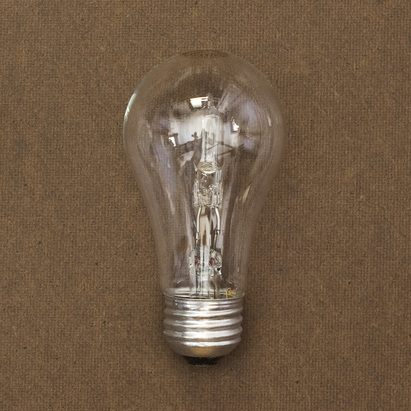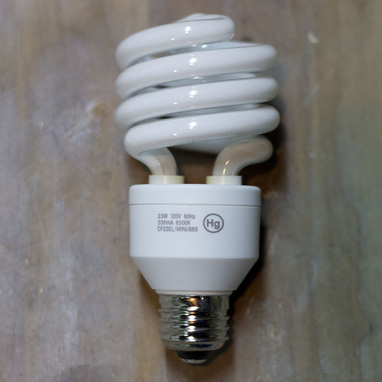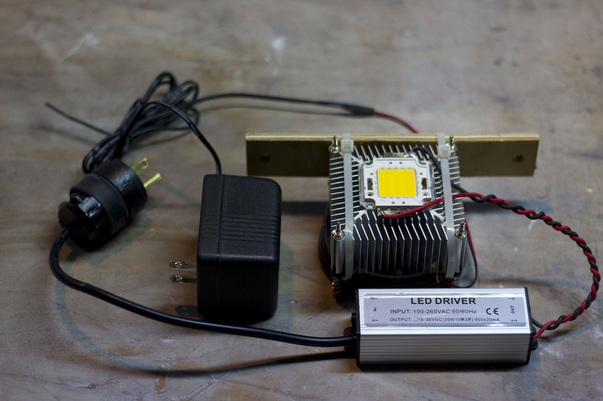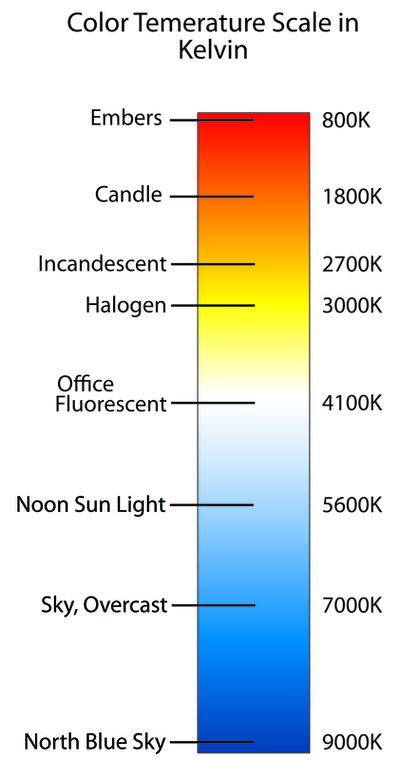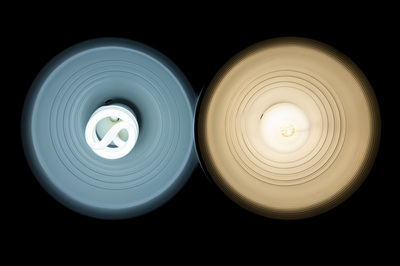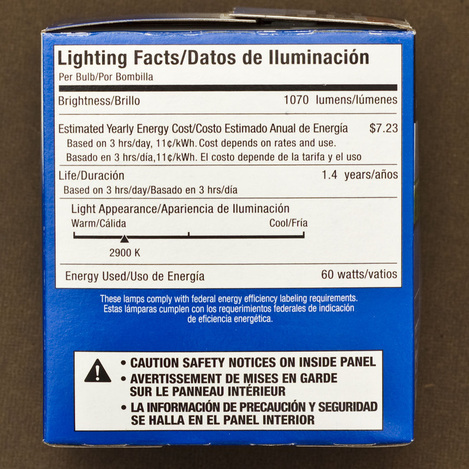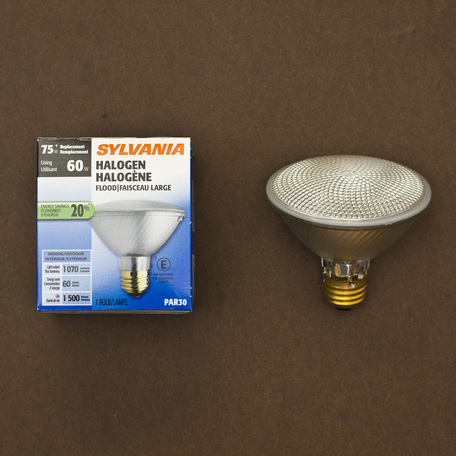Types of Lights
|
The three common types of lights or lamps are incandescent/halogen, fluorescent/CFL, and the newest type, light emitting diode (LED). I'm sure most people are aware of the differences, as these are all common household lights. What makes these lights more practical than natural daylight is convenience. For hundreds of years artists had to rely on the sun. They didn't have any other options besides candle and fire light. This makes painting from observation difficult because the earth's angle to the sun is constantly changing. Then factor in clouds and weather, and it only becomes a greater challenge. There are artists out there that will only paint and show their work with natural light. I don't discourage anyone for trying it, but it will be hard. Even though the old masters never used artificial light, doesn't mean you shouldn't either. You will find these lights are much easier to control and will expand the limit for your creativity.
|
|
Lighting in an art studio is extremely important and often over looked. You need proper lighting to ensure you are using accurate colors and values in your work. It doesn't matter if the painting is abstract or realism, you want to be able to see exactly what color and value you are applying to your canvas. Any of the three light sources listed can be used successfully to illuminate art or subject matter. I've tried all three in my studio and I have found my favorite; but first, an introduction to the lights.
incandescent
|
The modern incandescent generates light by passing electric current through a tungsten filament in a sealed glass bulb with inert gas (mostly argon and a bit of nitrogen). This process heats the filament causing it to glow, creating light. Halogen lamps work the same as incandescent bulbs, but instead of an inert gas in the sealed glass bulb, it is filled with halogen gas. Also, in place of a glass bulb, a small quartz envelope is used to tolerate the greater amount of heat it generates. With the tungsten filament in the presence of halogen gas, it will burn hotter, brighter, and can be 20% more energy efficient than a regular incandescent. Another benefit to halogens lights is the halogen cycle. In a regular non-halogen bulb, a small amount of the tungsten filament is vaporized during use and deposits on the inside of the glass. You can see this on incandescent bulbs that have been in service for many hours. Eventually the filament vaporizes and weakens to a point to where it breaks and burns out. With halogens lights, the filament will still vaporize, but the halogen gas will prevent it from sticking to the quartz envelop. Instead the vapors will re-deposit back onto the filament, completing the halogen cycle and greatly increasing the life of the lamp. A regular incandescent can see 750 - 1,000 hours of use and burns dimmer and dimmer before eventually dying. Halogens, depending on the manufacturer, can last 1,500 - 2,500 hours and remain nearly as bright from its first use, until its last.
|
Fluorescent
|
Fluorescent lights create light with a two step reaction of materials. Inside the glass tube, whether the long and straight or curly and twisted (CFL - compact fluorescent lamp), an electric charge excites the small amount of mercury contained within, vaporizing it. This causes the mercury gas to emit ultraviolet (UV) light. Since our eyes cannot see this type of light, another reaction must occur to create visible illumination. Also, within the fluorescent tube is a phosphor coating on the glass. This phosphor, once exposed to the UV light from the mercury, will emit its own light, the kind we can see. This process of making light is very energy efficient. A 23 watt fluorescent can produce the same amount of light as a 100 watt incandescent. You can also expect 9,000 hours on average of use from a fluorescent light. Their low cost to operate and long life makes them popular in offices, stores, schools, etc. But like the incandescent, they will dim over time and eventually fail for various reason. The most common example of one dying is a visually dim flickering. Cheaper CFLs can stop working all together due to a failure in the ballast electronics located in the base of the bulb necessary to regulate electricity for the light to function correctly. Another important aspect to stress, as I mentioned above, these light do contain mercury. If by chance the sealed glass tube is broken, mercury vapor can escape into the air; the same air you breath. Leave the room and wait for it to air out before cleaning up the broken glass. Its best to use a damp paper towel for clean up rather than a vacuum; the vacuum can spread the mercury contained in the phosphor coating on inside of the glass. Manufacturers also recommend proper recycling for fluorescent lights to prevent mercury in landfills.
|
LED
LED lights are becoming a practical option these days since prices for them are coming down. When they first came on the market for home use in lamps and fixtures, you could have expected to pay around $20 to $30 for a 12 watt lamp, a 60 watt incandescent equivalent. It wasn't until a couple years ago that manufacturers had the technology for a 100 watt equivalent LED in the standard bulb shape. Why? LEDs are tiny individual semiconductors; some can be almost the size of a pin head. In order to get any decent illumination from them, there needs to be several wired together. While LEDs don't produce a lot of heat, they can
|
|
produce enough to overheat themselves and fail unless there is a cooling method like a heat-sink or fan to dissipate the heat. Despite these challenges, the technology is getting better and better. They are common in many places these days such as TVs, traffic signals, flashlights, Christmas lights, and vehicles . I believe this is the light of the future. The technology to produce them will continue to grow, resulting in a more cost efficient product like we have seen happen to many modern electronics like TVs and computers. LEDs also use about 75% less energy to create the same amount of light as a incandescent and have a lifespan of 25,000 hour or more! Plus, they don't produce excessive heat like incandescent bulbs, nor do contain any heavy metals like fluorescence lights. LEDs are becoming an attractive alternative.
|
With the "Green Movement" pushing for energy efficient lighting, many individuals are choosing to replace the old incandescent lights with the CLF bulb. There is no doubt that either the fluorescent or LED bulb is better at saving energy. This is mainly because much of the energy used by an incandescent is converted to heat. There is a reason why a single 100 watt incandescent light bulb in an Easy Bake Oven can cook a small cake - it gets really hot! So what is the tradeoff? LIGHT QUILITY!
Color Temperature
Before I discuss light quality, I need to mention light's color temperature. Depending on the type of light, whether it is the sun, incandescent, or LED, you will notice some are warmer (more yellow), while some are cooler (more blue) in appearance. If you had a black bodied object such as a tungsten filament and heated it until it started to glow, it would start red and gradually start to glow orange, yellow, and then white. With even more heat, it would progress from white to blue, and then a deeper blue. This same scenario can be seen in a camp fire - the hotter flames appear more white or blue. The measurement used to determine a light's color temperature is Kelvin (K). Yep, the same unit of measure your science teacher might have made you use back in high school. A typical candle flame will emit an orange light and will measure in around 1800K. An incandescent lamp has a color temperature around 2700K; halogens, about 2900K - 3000K since they burn hotter. Noon sunlight is approximately 5600K. Fluorescents and LEDS are unique because their color temperature can vary depending on the type of phosphor coatings used. You can find fluorescent and LED lights in a large range from 2700K to 6500K. I encourage you to experiment with different color temperatures. You may find you like 5500K for portraiture, or maybe 3000K for still lifes. While you may develop a preference, the color temperature doesn't influence the light quality.
All important Light Quality! - CRI
|
Light quality for lamps is expressed by its color rendering index (CRI). CRI is determined by how well a light source can accurately render the color of an object. The scale of CRI exists from 1-100, 100 being the best. I think everyone has experienced low quality light. Some really low CRI light can be seen in street lamps or parking garages; absolutely nasty light that makes every color look muddy and dirty. These are called sodium-vapor lamps. They are very energy efficient and are capable of producing a lot of light, but have a CRI rating from 1 - 25.
When shopping for your studio lighting, it's important to observe the CRI on the packaging; it's usually listed on the back along with the light intensity (Lumens) as well as color temperature. Since incandescent/halogen lamps create light from heating a filament it renders all colors in its spectrum equally making it the benchmark, a CRI score of 100 - as good as it gets. Other lamp forms, LED, fluorescent, etc., are compared to an incandescent relative to its color temperature. For example, if a florescent with a color temperature of 2700K scored a CRI of 100, it's light would be identical to an incandescent lamp with the same color temperature of 27000K. |
|
|
The problem with LEDs and fluorescents is they don't always have a perfect CRI. Any LEDs and fluorescents purchased from a hardware store tend to have CRIs of about 80, which I don't recommend using to observe color. You want to find lights that are 90 or better. These are available, but only in photography stores where they specialize in high CRI lighting. Keep in mind they will be more expensive too. Also, note some LEDs and fluorescent lights claim to have higher CRI than what they actually do. Only trust reliable manufactures. When looking at incandescent/halogen "Lighting Facts" on the back of the packaging, rarely do they list the CRI, but you can assume its 100.
Below is an example of high CRI and low CRI. The high CRI is a Sylvania 72 watt halogen and the low CRI is a generic 30 watt LED. Both lights have a rated color temperature of 3000K. The camera white balance was set for 3000K light. The low CRI image could be edited to have the white cabinet appear white, but that much editing would also alter the other colors in the image. This would leave you with a passable image, but poor representation of color.
|
|
In my studio I use halogen lights. Art galleries, collectors, and museums also use them, and for me it makes sense to use the same lights to create your art that it will ultimately be displayed in. I don't know if my paintings will ever hang in a museum, but I can dream, right? Despite the higher energy cost to light them and the heat they produce, halogens are still the winner in light quality. A 1500 hour lifespan is nothing to complain about either; nor do you have to worry about them dimming a discernible amount over time with use. Halogens are also easily attainable in any home improvement store for a reasonable price.
As with any purchase you make, you get what you pay for. Light bulbs are no exception. If you buy cheap generic lights, don't expect them to last as long as they claim. In my experience, generic brands tend to fail prematurely. The brand I've had much success with is Sylvania. Many of my Sylvania halogens have actually lasted longer than what they claim to be rated for. I buy mine at my local Menards store and have zero complaints. Typically, I use two or three (depending on the size of the painting) Sylvania PAR30 60 watt, 50 degree flood halogens to light my paintings; then another one in my table lamp to illuminate my palette. PARs are unique because they focus a concentrated beam of light in one direction. Click below to read more about my comparison between PAR flood lights and standard blubs.
|
In conclusion, I encourage you to try all three types of lights to see what you like best. If you find yourself intrigued by cooler lights, such as 5000K fluorescents, be sure to closely observe the CRI rating. Look for lights with a CRI of 90 or greater. Be careful with lights that claim to be “full spectrum”. It’s usually marketing hype that doesn’t mean much. Also keep an eye on the vastly improving LED technology. I believe one day they could produce a quality of light just as well as incandescent lamps.

